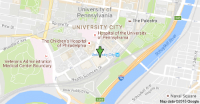Cerebral Cavernous Malformations
Cerebral Cavernous Malformations (CCMs) are devastating but the mechanisms are not well defined.
CCMs cause stroke and seizure in young people, many of whom carry a mutant disease allele. Our studies build upon prior studies that defined a CCM-MEKK3-KLF2/4 signaling axis in endothelial cells that contribute to CCM disease. Recently, we have shown that gram negative bacteria in the gut microbiome further contribute to disease progression (Nature 2017, Science Translational Medicine 2019). Furthermore, degradation of the extracellular matrix by secreted proteases recruits normal, un-mutated cells to CCM lesions and exacerbates disease (Journal of Experimental Medicine 2020). Lastly, we have found a synergistic role for PI3K signaling in lesion formation in mice and humans (Nature 2021). Projects are now investigating other pathways that contribute to CCM lesion formation.
Collaborating Labs
- Issam Awad (University of Chicago)
- Doug Marchuk (Duke University)
- Michael Potente (Max Planck Institute for Heart and Lung Research)
- Mark Ginsberg (University of California, San Diego)
See the below recent publications related to this project:
PIK3CA and CCM mutations fuel cavernomas through a cancer-like mechanism
Ren et al. 2021, Nature. https://doi.org/10.1038/s41586-021-03562-8
Cerebral cavernous malformations are driven by ADAMTS5 proteolysis of versican
Hong et al. 2020, Journal of Experimental Medicine. https://doi.org/10.1084/jem.20200140
Distinct cellular roles for PDCD10 define a gut-brain axis in cerebral cavernous malformation
Tang et al. 2019, Science Translational Medicine. https://stm.sciencemag.org/content/11/520/eaaw3521

Endothelial TLR4 and the microbiome drive cerebral cavernous malformations
Tang et al. 2017, Nature. https://www.nature.com/articles/nature22075
Cerebral cavernous malformations arise from endothelial gain of MEKK3-KLF2/4 signalling
Zhou and Tang et al. 2016, Nature. https://www.nature.com/articles/nature17178

